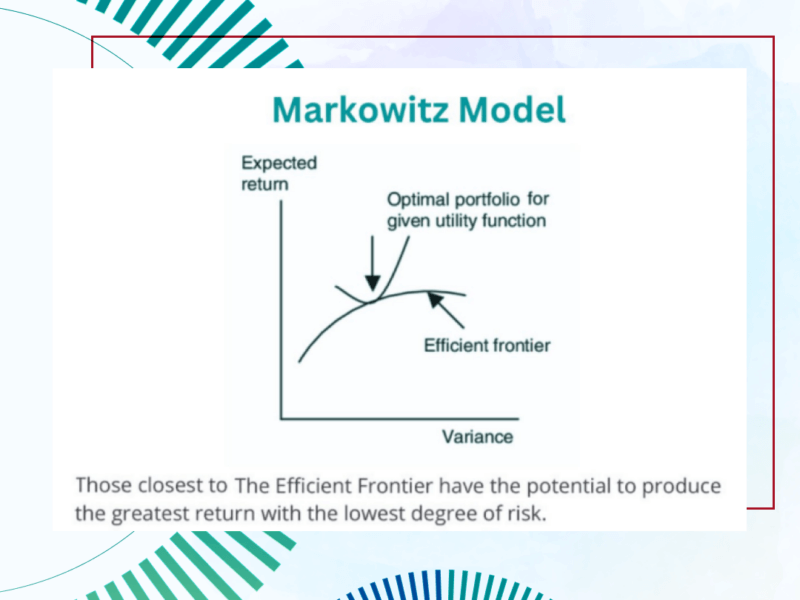Should a security in question be purchased (or sold, or retained) at this price, at this time? This is the question, which security analysis is intended to answer. Over time, two very different approaches have been developed. One of them is referred to as fundamental, the other as technical.
Technical analysis
Technical analysis is the analysis of prices by studying charts of the prices and looking for patterns and trends that suggest future price movements.
Some aspects of technical analysis started to show up centuries ago. Modern technical analysis goes back to Charles Dow (co-founder of Dow Jones & Company and creator of Dow Jones Industrial Average index) and the Dow Theory which is based on his writings. The key assumptions of the technical analysis include:
- stock prices quickly incorporate and reflect all relevant information. The stock price is a function of supply and demand. Many factors, rational and irrational, have an effect on it. All factors are weighed and expressed in this specific number.
- the prices move in trends
- past market actions can be valuable predictors of the future price movements
The technical analysis focuses on market action itself, i.e. price movements, and does not take into account the company financials. A technical analyst attempts to understand the market sentiment behind price trends and to forecast price direction based on historical data. Generally, technical analysts examine indicators such as price trends, chart patterns, volume and momentum indicators, oscillators, moving averages, support and resistance levels. Some technical analysts claim to be able to interpret a chart of a stock price without even knowing its name. However, it is not a recommended practice.
Technical analysis is often used as a source of trading signals. It may also help to improve the assessment of the strength or weakness of a security with respect to the broader market or one of its sectors. Technical analysis can be used on any security with historical trading data, including stocks, futures, commodities, fixed-income, currencies.
Fundamental analysis
Contrary to technical analysis, fundamental analysis implies study of the business. The inputs to an analysis can be classified as quantitative and qualitative. Quantitative factors are measurable characteristics of a business and include capital structure, earnings, dividends, assets and liabilities, operating statistics, cash flows. This information can be obtained from the company reports: income statement, balance sheet, statement of cash flows. Qualitative factors involve the nature of the business, management and reputation, competitive advantages, prospects of the market, of the industry, and of the company. An analyst gathers and orders important facts, compares the indicators of a security to those of other securities of a similar nature, reveals its strengths and weaknesses, and evaluates the factors that could influence its future performance. The objective is to determine whether the particular security is to be purchased, sold, retained or exchanged for another. To answer this question, the analyst seeks to determine whether the intrinsic value of a security is adequate, substantially above or substantially below the market price. The intrinsic value is a value justified by facts rather than by manipulative of psychological factors.
Which is the preferred choice?
Both technical and fundamental analysis have their own limitations. While the assumption that the price of a security reflects all the activities and attitudes of all stakeholders may be true, many argue that the theoretical basis for technical analysis is rather weak.
Unavailability, inadequacy or incorrectness of the data, uncertainties of the future, and irrational behavior of the market are the basic obstacles to the success of fundamental analysis.
Fundamental analysis helps invest at a bargain-priced securities, which provides a margin of safety. Technical analysis may augment trading strategies and overall valuation estimate.
It’s fair to say that any kind of analysis is an art, not an exact science. Talented and experienced analysts will provide a sound basis for your investment decisions.
Risk Warning: The information in this article is presented for general information and shall be treated as a marketing communication only. This analysis is not a recommendation to sell or buy any instrument. Investing in financial instruments involves a high degree of risk and may not be suitable for all investors. Trading in financial instruments can result in both an increase and a decrease in capital. Please refer to our Risk Disclosure available on our web site for further information.



I think that there is no such thing that some kind of analysis is more effective. They should complement each other. But it seems to me that there are cases in the market when only fundamental analysis is enough to predict the rise or fall of the price. This is news with some obvious result. But this does not happen all the time, so you need to be able to read charts and use technical indicators for analysis.
I am sure that ISEC WM managers are real professionals and good analysts that will help to increase capital.
This opinion came to me for a reason. I had a consultation with the ISEC WM manager before starting to invest. After that, I realized that ISEC WM is regulated by CySec for a reason.